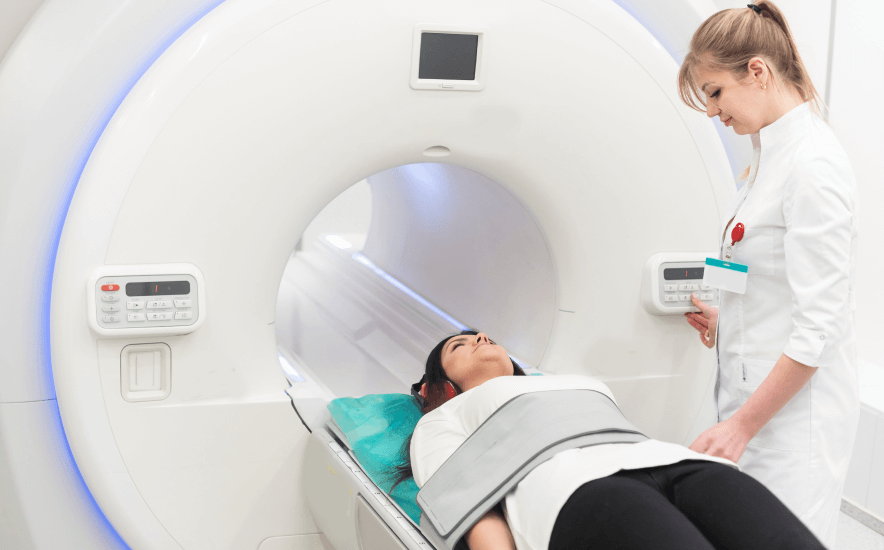
What is Cephalgia?
Cephalgia is the medical term for a headache, which refers to pain or discomfort in the head, scalp, or neck. Headaches can be classified into different types based on their causes and symptoms. The two most common types are primary headaches, which include migraines, tension-type headaches, and cluster headaches, and secondary headaches, which result from other underlying health conditions such as infections, head injuries, or neurological issues. Effective treatment often depends on proper diagnosis and addressing the underlying causes or triggers.



Related Diagnoses

Cervicogenic Headaches

Migraines

Tension Headaches

Occipital Neuralgia
Expanded Guide
- Cervicogenic Headaches: Cervicogenic headaches are a type of headache that originates from issues in the cervical spine (neck) or surrounding areas. These headaches are secondary headaches, meaning they are caused by an underlying problem, in this case, the structures in the neck such as the vertebrae, muscles, nerves, or discs. The pain typically starts at the back of the head and can radiate to the forehead, temples, or around the eyes. The hallmark of cervicogenic headaches is that they are often unilateral (on one side) and tend to be accompanied by restricted movement in the neck. The headache is usually aggravated by certain neck movements or sustained awkward postures. Causes of cervicogenic headaches can include neck injuries, arthritis, degenerative disc disease, or poor posture.
- Migraines: Migraines are a type of primary headache disorder characterized by recurring, severe headaches, often accompanied by other symptoms such as nausea, vomiting, and sensitivity to light, sound, or smells. Migraines typically cause intense, throbbing pain, usually on one side of the head, though it can affect both sides. The pain can last anywhere from a few hours to several days and may significantly interfere with daily activities. Migraines are often divided into two main types: migraine with aura and migraine without aura. Aura refers to a set of neurological symptoms that some people experience before the onset of a headache. These can include visual disturbances (like seeing flashing lights or blind spots), tingling sensations, or difficulty speaking. Migraine triggers can vary widely but often include stress, hormonal changes (particularly in women), certain foods and drinks, lack of sleep, and environmental factors. Migraines are thought to involve complex interactions between the brain and nerves, as well as changes in blood flow to the brain.
- Tension Headaches: Tension headaches are the most common type of primary headache, often described as a feeling of tightness or pressure around the forehead, temples, or the back of the head and neck. The pain is typically mild to moderate and is often described as a constant, dull ache rather than a throbbing sensation. Unlike migraines, tension headaches are not usually associated with nausea, vomiting, or sensitivity to light and sound. Tension headaches can be episodic or chronic. Episodic tension headaches occur occasionally and are often triggered by stress, anxiety, poor posture, fatigue, or muscle strain. Chronic tension headaches, on the other hand, occur more frequently, sometimes lasting for hours or even days, and can significantly affect a person’s quality of life. The exact cause of tension headaches is not well understood, but they are believed to involve muscle tension and stress in the head and neck region.
- Occipital Neuralgia: Occipital neuralgia is a neurological condition characterized by sharp, shooting, or throbbing pain that originates in the upper neck or back of the head and radiates toward the scalp. This pain occurs due to irritation or injury to the occipital nerves, which run from the top of the spinal cord up through the scalp. Occipital neuralgia is often mistaken for migraines or other types of headaches because of the similar pain patterns, but it has distinct characteristics. The pain associated with occipital neuralgia is typically described as intense, stabbing, or electric shock-like, and it usually occurs on one side of the head. It can also be accompanied by tenderness in the scalp, sensitivity to light, and pain with neck movements. Causes of occipital neuralgia include trauma to the back of the head or neck, muscle tightness in the neck, arthritis, pinched nerves, or other issues affecting the cervical spine. In some cases, no specific cause can be identified.
Frequently Asked Questions
Have more questions? Schedule a consultation with Dr. Patel to gain additional insights and discuss treatment options. We are committed to advancing your health through patient education and a safe, minimally invasive approach.
Cephalalgia, or headache, is diagnosed primarily through a thorough medical history and physical examination. Healthcare providers assess the type, frequency, and severity of the headaches, as well as any associated symptoms like nausea or sensitivity to light. They also inquire about possible triggers, family history, and any underlying medical conditions. Neurological exams may be conducted to rule out other causes. In some cases, imaging tests such as MRI or CT scans, or blood tests, are used to exclude more serious conditions like tumors, infections, or vascular disorders. The diagnosis often helps classify the headache type, such as migraine, tension, or cluster headaches.
Treatment options for cephalalgia, or headaches, depend on the type and underlying cause. Common treatments include over-the-counter pain relievers like acetaminophen or NSAIDs for mild headaches. For more severe or chronic cases, prescription medications such as triptans (for migraines), muscle relaxants, or anticonvulsants may be used. Non-medication approaches include lifestyle changes like stress management, regular sleep, and hydration. Physical therapy, acupuncture, or biofeedback may be recommended for tension-type or cervicogenic headaches. In some cases, preventive medications or nerve blocks are used to reduce headache frequency, particularly in chronic or recurrent cases.
The duration of cephalalgia, or headaches, varies depending on the type. Tension headaches typically last from 30 minutes to several hours but can persist for days in chronic cases. Migraines can last from 4 to 72 hours, and cluster headaches, though shorter in duration, can last between 15 minutes to 3 hours, often recurring multiple times a day. Some headaches, such as those related to underlying conditions or chronic daily headaches, can persist for extended periods if left untreated. The duration is highly variable and depends on the headache type, severity, and individual triggers.
Cephalalgia can lead to complications, particularly if it is chronic or severe. Frequent or poorly managed headaches can cause reduced quality of life, impacting daily activities, work, and social interactions. Chronic headaches, like migraines or cluster headaches, may lead to anxiety, depression, and sleep disturbances. Overuse of pain medications can also result in medication-overuse headaches, further complicating the condition. In rare cases, cephalalgia can indicate an underlying serious condition, such as a brain tumor or aneurysm, which requires immediate medical attention.
Gramercy Center
Take the first step towards a healthier life by scheduling your initial consultation with Dr. Patel. At our clinic, we specialize in minimally invasive procedures that offer faster recovery, improved function, and decreased pain. Our client-centered approach ensures that you receive the highest quality care tailored to your unique needs. We look forward to offering you an exceptional experience.
